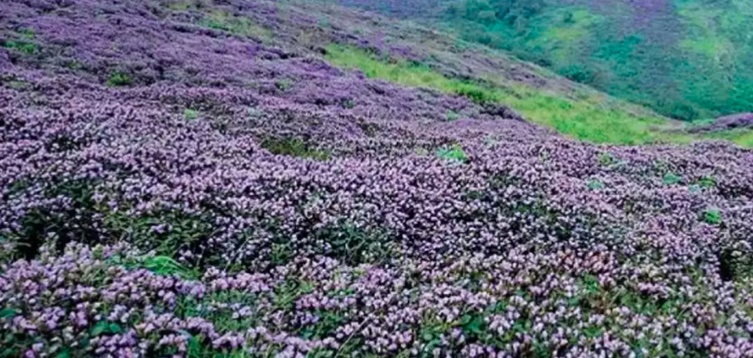Nilgiris: Neelakurinji (Strobilanthes kunthiana)
m (Jyoti moved page Neelakurinji to Neelakurinji (Strobilanthes kunthiana) without leaving a redirect) |
Revision as of 17:57, 29 January 2022
This is a collection of articles archived for the excellence of their content. |
What is Neelakurinji?
Rohan Premkumar, December 20, 2017: The Hindu

From: Giji K. Raman, April 24, 2018: The Hindu

From: Rohan Premkumar, December 20, 2017: The Hindu
The flower, also called Neelakurinji and special to the western ghats, especially The Nilgiris, has a 12-year flowering cycle. In Tamil Nadu, less than 10% of the total number of Strobilanthes plants remain, as most of the grasslands where they occur have been destroyed because of the establishment of tea estates and introduction of invasive species, he notes with concern.
Swathes of shola grasslands in the blue mountains are likely to hit a purple patch with the expected mass blooming of kurinji flowers (Strobilanthes kunthiana) by winter 2018.
Blooms in 2021
Dec 13, 2021: The Times of India

From: Dec 13, 2021: The Times of India
Neelakurinji, known as Strobilanthes kunthiana, bloomed in Biligiri Ranganathaswamy Temple (BRT) Tiger Reserve this year. - Photos by Karnataka forest department
Neelakurinji blooms once in 12 years.
The blooming rare bluishpurple flower makes for a spectacular view, attracting a large number of visitors, although entry to the reserve is restricted.
This flower has been in bloom for two weeks in a large area of Chamarajanagar district hill range of Byluru and Punajur.
The flower has been seen also in the hill ranges of Honnametti and Bedaguli estates.
After the government declared BRT a tiger reserve, the forest department restricted the entry of visitors to enjoy this rare sight.
Earlier, the flower used to bloom in Kodagu and Bababudangiri hills in Chikkamagaluru district too.
This flower is believed to have medicinal value.